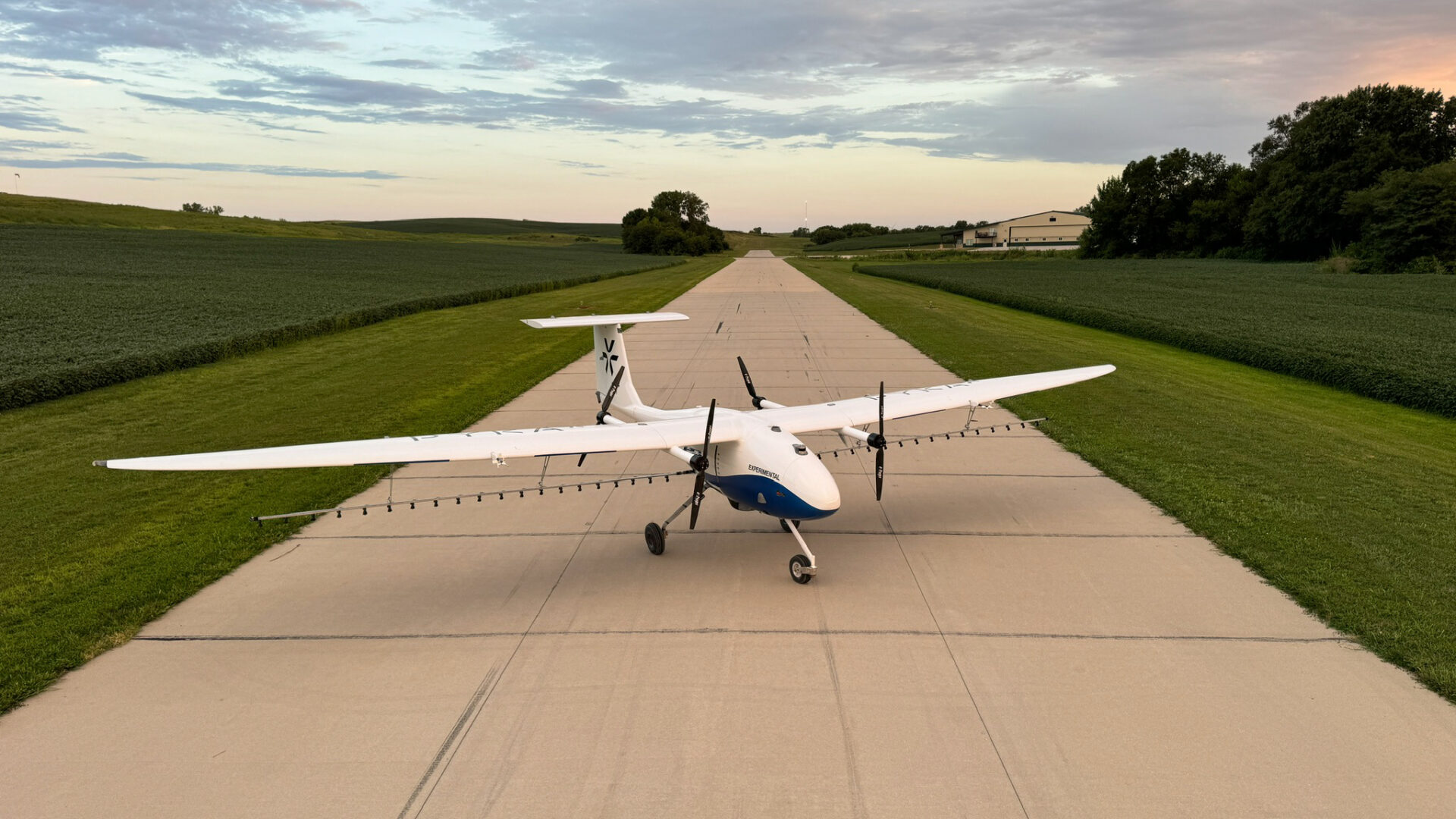Ag retailer Heinen Brothers Agra Services—best-known for manned crop spraying airplanes—is pushing into the unmanned space via a new subsidiary called Kelly Hills Unmanned Systems, pitched as “the most advanced aerial and ground-based agricultural robotics enablement platform in the world.”
To mark its launch, Kelly Hills is holding an ag UAS (unmanned aircraft system) testing event in Kansas next week (Aug 22) which will feature Pyka’s ‘Pelican Spray,’ billed as the largest commercially available UAS in the US.
Kelly Hills is the first US customer for Pelican Spray, the largest UAS authorized by the Federal Aviation Administration (FAA) for commercial use, said Heinen Bros CTO Lukas Koch, the new CEO at Kelly Hills.
“As experts in aerial application, we see the potential for UAS to revolutionize our industry, offering significant cost-saving benefits to American farmers. Pelican Spray is the first autonomous agricultural solution that delivers the necessary work rate and spray performance needed to provide a viable commercial solution to begin augmenting our current fleet.
“Ultimately, we want to keep the pilots of our manned aircraft safer, so we are adopting a proactive approach that will allow UAS to handle certain workloads that will get our traditional pilots home safely to their families and loved ones.”
Pelican Spray will conduct a live flight demonstration in Seneca, Kansas, on August 22 as part of the Kelly Hills launch event, which is open to customers, vendors, researchers, policy makers, and agriculture industry leaders.
49,000 square mile drone testing range spanning four states
Through a relationship with the University of Alaska-Fairbanks, the FAA has approved 49,000 square mile unmanned aerial systems test range spanning Kansas, Missouri, Nebraska and Iowa, allowing for advanced drone testing on systems that are not readily available to public users, said Koch.
“Unmanned aerial application in agriculture is accelerating faster in other countries than it is here in the United States. We invite American agriculture and international players to Kansas on August 22 for an opportunity to look over the horizon, glimpse into the future and learn more about climate-friendly precision agriculture and economically feasible agricultural unmanned aerial systems.”
The range provides the ability to host fixed-wing, multirotor, and rotary-wing systems testing applications on ten different crops including corn, soybeans and milo, he explained: “This privately managed test range will provide a unique opportunity for developers and manufacturers to evaluate system efficacy in a low-risk environment while helping products reach commercialization faster through collaboration with key parties in the value chain.
“Our goal is to become the epicenter for unmanned aerial systems in the agricultural space. We seek relationships with those who want to capitalize on these assets and utilize a one-of-a-kind test range to move the agricultural industry forward.”
‘It’s hard to find pilots’
Koch told AgFunderNews: “We’re started in 1994 with two brothers and one airplane in northeast Kansas; today we cover states from Illinois to Louisiana. Along the way, we got into ag retail, selling inputs and fertilizers and some ground rig applications.
“The [manned] aerial application industry has been on a steady upward trend for over 100 years, but spray drones have a lot of potential, so we have been looking at how to work those into our commercial operation.”
He added: “We’ve been engaging with companies and OEMs of these spray drones and went out to find bigger, better, faster systems, to see who is really pushing the envelope. We found several companies, and as we started to talk with them, we learned more about their pain points, but also saw a big void. I saw a lot of air taxi work, package delivery work, air medical work, but fewer big agricultural specific platforms.
“So I was talking to some of these companies and said, besides us being an early adopter and trying to work with you on your early prototypes and get these things ready for your customers, how about we dive deeper and work with the FAA to help move this along? And so we had good conversations with the FAA and were very fortunate to find our partner, the University of Fairbanks, Alaska, to get this test range set up.
“Now we can work with these drone companies and OEMs, to start really testing the systems in real world environments.”
He added: “A big part of why we we’re doing this is pilot safety. It’s hard to find pilots. Northeast Kansas is quite hilly, we have a lot of trees and smaller fields and the airplanes are constantly having to go into pretty dangerous situations with power lines and trees and other obstacles. In these cases, it’s just better to use unmanned systems.”
Further reading:




